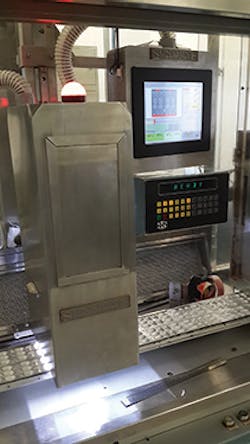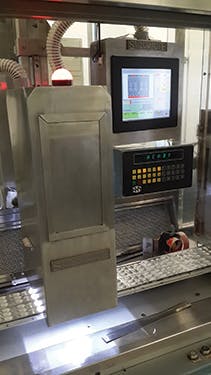Packaging and Production: Embedded vision system performs blister pack inspection
Quality assurance of packaged products is of critical importance in the pharmaceutical industry since incorrectly packaged or damaged products may result in expensive manufacturer recalls or potentially fatal accidents. Because of this, tablets packaged in blister packs need to be inspected carefully for defects such as the wrong color, size, whether the tablets are broken or chipped and whether there are any empty pockets in the blister pack itself.
With the recent directives by the World Health Organization (WHO; Geneva, Switzerland; www.who.int) for international exports of such products, inspection requirements have become more stringent. For pharmaceutical vendors, there is also ongoing pressure for volume production, and quality assurance mechanisms with sorting capabilities.
"These are demanding applications where robust, deterministic and scalable solutions are required, a problem that becomes more complex with more products being produced on the same machine, signifying a need for a flexible user interface with profile selection and editing capabilities," says Faisal Mirza, Proprietor of Sunshine Corporation (Karachi, Pakistan; www.sunshine.com.pk).
For one major manufacturer of pharmaceutical products, Sunshine Corporation has developed a vision system capable of inspecting and rejecting 800 blister packs per minute. To accomplish this task, images of up to eight blister packs placed on a 330mm wide conveyor are imaged by a 2MP GigE Camera from IMI Korea (Gyeonggi-do, Korea; www.imi-tech.com) running at 16 fps fitted with a 12 mm lens from Computar (Tokyo, Japan; www.computar.com).
The camera is mounted inside a vertically adjustable stainless steel (SS316) canopy that also holds a pair of model LEDWLA290XD6-XQ linear array area lights from Banner Engineering (Minneapolis, MN; USA; www.bannerengineering.com). The camera is mounted at a height of 640 mm from the blister guide and provides a total field of view of 330 x 270 mm.
Images from the camera are transferred to an EVS 1454 Embedded Vision System from National Instruments (NI; Austin, TX, USA; www.ni.com). Here, the color, size, and features of the tablets within the blister packs are inspected as well as whether any empty pockets are present. "Since each image may capture from one to 14 blisters, different algorithms are required to process the images. These include thresholding (for white tablets on Aluminum forming) and HSI model color thresholding (for color tablets), filtering and convex hull perimeter and Feret's diameter calculations," says Mirza. Processed images are then analyzed by a number of blob tools. Results of these blob tools are then used to actuate I/O lines on the controller that are interfaced to a number of reject plungers that are controlled by pneumatic actuators at the end of the conveyor.
By displaying the number of acceptable, failed and inspected blisters as well as availability, performance and quality parameters, the Overall Equipment Effectiveness (OEE) for the blister line is calculated and displayed on a 10in touch panel PC from Winmate (Taiwan, ROC; www.winmate.com) which serves as the HMI. These statistics are constantly computed in parallel (on individual cores of the i5 processor in the PC) using the results from Vision Builder for Automated Inspection (VBAI) running on the EVS 1454.
To allow for rapid product changeover on the production line, the user interface features an ALL pass/ALL fail option so that blister packs on the line can be flushed before product changeover occurs. Since multiple products may run on the same machine, the interface also allows the operator to adjust the parameters of each new product such as size, color, number of blisters and the pneumatic actuators at the out-feed allowing only blister packs with zero defects to pass to the packaging machine. A video of the system in operation can be seen at http://bit.ly/1wWep3H.
The user interface was developed using LabVIEW running on Windows Embedded Standard 7. LabVIEW's multi-core processing capability makes it possible to add auxiliary field sensor inputs such as barcode sensors mounted at different distances from the vision station.
Already, the systems have been deployed on a number of blister machines including those developed by Uhlmann Packaging Systems (Laupheim, Germany; www.uhlmann.de), Romaco Pharmatechnik (Karlsruhe, Germany; www.romaco.com) and The Marchesini Group (Bologna; Italy; www.marchesini.com). Depending on customer requirements, the cost of the inspection system varies from $12,000-$18,000 per unit.

